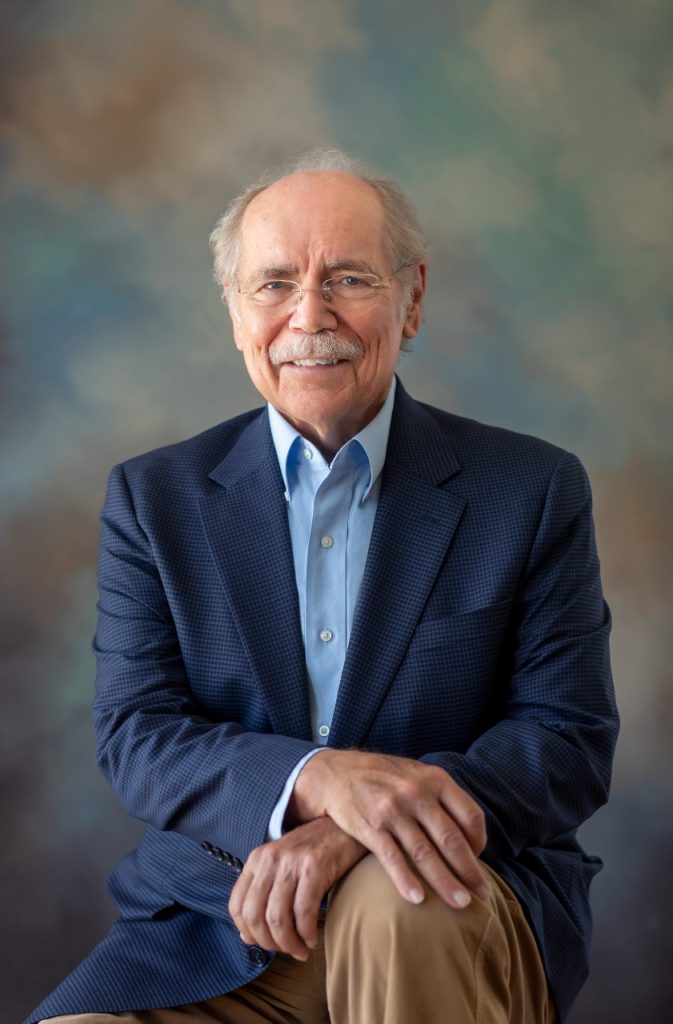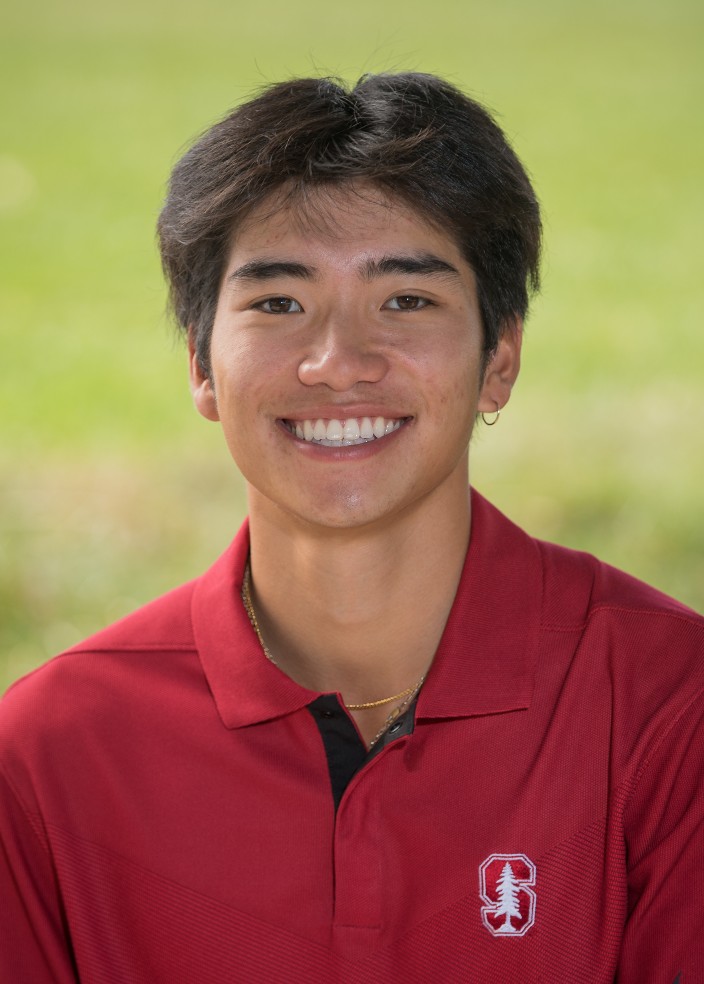
Dave Kindred is a name that exudes reverence in the world of sports. He’s captured nearly every honor for a sports writer – from the Red Smith Award to the PGA Lifetime Achievement Award, Dave has done it all. But when meeting him you’d never know it.
At 82 years old, Kindred stands around 5’6 but walks like a young man, his steps are short and quick. His face is kind, and his voice is soft with a hint of a midwestern accent. He’s humble and personable. It feels like you’re listening to your grandfather.
As we walked to Coupa Cafe on Stanford’s campus, there was no mention of his accolades or of writing. Instead, we talked about our shared love of golf. While my love for golf resulted in playing at the collegiate level, Kindred’s love for the game led to him covering The Masters, the most prestigious tournament in the world, for 52 years.
Kindred’s career took flight in the mid-1960s where he worked at the Louisville Courier.
Journal for two years. His journey led him to become a sports columnist for the Washington Post, the Atlanta Journal-Constitution, the Sporting News, and Golf Digest. Kindred has worked primarily as a sports columnist his whole career covering every major sporting event from 17 of Muhammed Ali’s fights to more recently his hometown women’s basketball team – the Morton Lady Potters in downstate Illinois. It’s what he’s always wanted to be and what he’s always done.
“Being a columnist I can write how I want,” Kindred said. “I can be honest and truthful about how I see it. The goal of my writing is to bring the reader to the moment with me the best I can.”
While the bulk of his career has been spent as a sports columnist, Kindred considers himself a writer foremost. His love for writing can be traced back to his early years. He recalled as a young teenager going to the train station near his home and picking up four or five copies of the Chicago newspapers where he would read renowned sportswriter Red Smith’s column every day.
“I was just curious. I wanted to learn more and more – and the only way to do that was to read as much as I could. And Red [Smith] was the model,” said Kindred.
Growing up, Kindred was captivated by Smith’s writing. The way Smith transformed the sports page into literary artistry, adding touches of music and humor – transporting the reader to the scene. Smith’s sports columns ignited a fire within Kindred, driving him to hone his craft and make his own mark on the world.
I asked Kindred, “Why sports? What is it about sports that you feel drawn to?”
“It’s what I know best,” he replied. “Writing news is writing about people doing extraordinary things. Writing sports is about extraordinary people doing unimaginable things. Now who wouldn’t want to write about that.”
Art Spander, long-time American sports writer, now columnist for the San Francisco Examiner, and dear friend of Kindred’s, spoke about his writing. “He [Kindred] has a wonderful eye for detail and the unusual,” Spanda said.
We spoke about Kindred’s piece about the 2019 U.S. Open at Pebble Beach and how he had proposed to Spander that they leave the press room and go down to the beach to interview spectators.
So I left the golf course through Gate 2, walked along 17 Mile Drive, and turned right onto a boardwalk that reached the beach. It’s not Pebble Beach, it’s Carmel Beach. It belongs to the next little rich town over. Saturday morning, early, on the beach, these people aren’t there to get a free look at the golf being played atop the cliffs. They’re there for the beach because, y’know, who’s got much better to do than walk on a Pacific Ocean beach early on a Saturday morning? They brought their dogs. I met a Rhodesian Ridgeback named Kenya. A soaked-with-surf poodle named Gabriella. A Great Dane, Clyde. “Standing with his paws on your shoulders, Clyde’s 6-foot-3, 200 pounds,” his human companion, Kyle, said. “Got a sister at home, Bonnie.”
This piece perfectly showcases Kindred’s exceptional eye for detail and his ability to find the unusual within the ordinary. Rather than focusing solely on the golfers and the competition, Kindred provides a refreshing piece that paints a vivid picture of the scenes beyond the fairways. He captures new perspectives from dog walkers, casual beachgoers, and visitors who share the same space as golf enthusiasts. Kindred’s talent for highlighting the unique, and often overlooked aspects of the sporting world, is what makes him stand out from the rest.
“God, l wish I wrote that piece. He always thought outside the box,” Spander said.
Kindred and Spander’s friendship dates to 1967 when they met for the first time at The Masters. Kindred, a 26-year-old at the time, came to the tournament wide-eyed and eager to see golf’s biggest stars on its biggest stage. He had two goals for his first outing: the first to watch Ben Hogan, and the second to meet Red Smith.
Kindred recalled sprinting over to the driving range just outside the media tent, to watch Hogan practice before his third round. Hogan with his thick and strong carpenter-like hands was the lone man on the range, striping his five iron into his caddy’s hand 175 yards away — just one of the many examples of Kindred witnessing extraordinary people doing unimaginable things.
After watching Hogan, Kindred arrived to the Quonset hut, a tin-roofed tent that housed all media, Kindred remembers immediately heading to the back of the room where Smith’s desk was located. Reminiscing about this with a smile on his face, Kindred recalls standing behind Smith’s desk no more than 10 feet away watching him work. He remembers Smith’s slow meticulous fingers chugging away at the typewriter, and his hands shaking as he put the copy paper in the typewriter. I asked Kindred if he introduced himself to Smith.
“God, no. I was too nervous and afraid. It was Red Smith for crying out loud. I just watched and admired him,” Kindred said. “He was always good to me. Answered questions I had and gave me good advice. He was perfect.”
For Kindred, The Masters was more than just a golf tournament; it was an annual pilgrimage to the sport’s most sacred ground and time well spent with close friends. He made it a point to walk down Augusta National’s Magnolia Lane every year, recalling the blooming azaleas, towering pines, and the pristine clubhouse at the end of the road.
“It was like being in heaven every year. There’s no place better,” Kindred said.
The Augusta National press box or Quonset Hut was a gathering place for some of the most talented and passionate sportswriters of all time. The shared experience of covering The Masters fostered a sense of deep camaraderie and mutual respect.
Kindred along with other fellow sports writers like Art Spander, Tom Callahan, and Bob Verdi, would rent a house together near the course. They’d spend all day covering the tournament then come back together to discuss their work over dinner. The sounds of laughter, anecdotes from the day, and whispers of new edits ruminated around the room. Kindred was always the quieter one in the group.
As I was on the phone with Spander fondly reminiscing about their time at the Master’s, his wife Liz interrupted our conversation saying Kindred was usually deep in thought, thinking about the best angle to write his story.
She said, “He’d [Kindred] sit in a reading chair in by the fire and have his one, two, maybe three beers and write non-stop. He’d always be alone while everyone else was drinking and chatting. And by the end of the night, all the guys would read his work and say ‘Gosh I wish I had written it like that,” said Liz Spander.
After 52 years of covering The Masters, Kindred’s approach has always been the same – characterized by his humility and a keen eye for detail to create compelling narratives. To Kindred, The Masters was more about the stories of the players than it was about their scores.
One of the most compelling stories Kindred wrote was about Tiger Woods’s victory in 1997. In true Kindred style, he begins the piece with a sense of humor. He paints a picture of Woods hitting his drives with the headcover still on and former girlfriends lining the ropes. But the meat of the piece is how Woods was the first person of color to win a major championship and the inequalities black people faced in the world of golf.
The newest American hero has won the grand old tournament at 21, the youngest champion ever, he won with a record score and record margin by playing golf seldom imagined let alone realized. He hit shots so far, so straight, so high and with such majesty as to leave mere mortals believing they should apologize for their miserable efforts in his supranatural company….
…And the golf records themselves were the least of Tiger’s accomplishment. More important than any numbers was one color. The color of his skin. The son of a Thai mother and African American father, Tiger Woods is the first man of color to win one of golf’s four major championships.And he did it at the best place to do it if you wanted folks to sit up and take notice. He did it in a Georgia town at a tournament that for so long, either by design or circumstance, was closed to Blacks. Those people who saw design at work were often moved to anger Calvin Peete came to the Masters in 1980, the second Black player in the tournament’s history, and he once said, “Asking me if I enjoy being here is like asking if we enjoyed slavery.”
Kindred: “I’ve always thought of myself as a writer with a broader perspective than just sports. And certainly, race is an integral part of not only sports history but American history. I felt compelled to write about it because I wanted a different angle from everyone else.”
The key to Kindred’s strong was how he didn’t just report that Woods had won; he contextualized the triumph within the history of The Masters and the evolution of golf.
Bob Verdi, another highly respected sportswriter from Illinois, said, “Dave has a way of making the extraordinary feel intimate. His piece on Tiger wasn’t just about a young man winning a golf tournament, it was about a young man breaking barriers and inspiring another generation.”
In an era where sports journalism is continuously evolving, Kindred’s work at The Masters is a testament to what great reporting and writing can be. His eye for detail and inquisitive nature captured the soul of the sport. Through his friendships and his masterful storytelling, Kindred’s presence at The Masters was truly time well spent.

